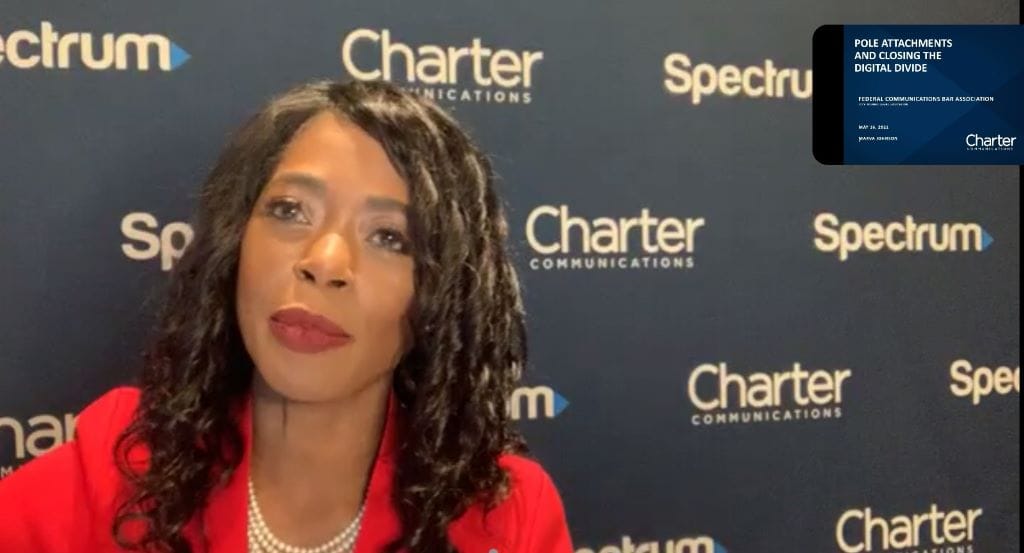States Should Subsidize Pole Replacement Costs, Charter Says
The issue of pole attachment costs to place broadband equipment is being examined by the FCC.
Teralyn Whipple

WASHINGTON, May 17, 2022 – Utility pole replacement funds should be sponsored by states to alleviate concern on the part of service providers often responsible to bear such costs, said an executive for Charter Communications.
Marva Johnson, spectrum group vice president for cable company Charter, was speaking at a Federal Communications Bar Association event Monday, which heard that utility poles are essential for broadband deployment. These poles, lined over ground, are often more economically feasible than putting cables underground.
“Utility poles are truly essential for broadband deployment,” said Johnson, adding that other options are not readily available. “Aerial deployment was [found to be] faster and less expensive than undergrounding,” she said. Charter estimates that “8 percent of utility poles need to be replaced in order to facilitate broadband deployment.”
But when providers want to put new equipment on an existing pole and the pole would need to be replaced to accommodate the new attachments, then the pole owner would pass the cost along to the third-party. That, Johnson said, makes broadband service providers the primary victim for pole replacement costs
Some states have issued a disbursement fund to offset the utility pole replacement cost through a state-sponsored grant program, following service provider concerns that pole owners are using their leverage to unfairly increase costs for attachments, which in turn limits broadband deployment to rural areas.
Letha Tawney, commissioner at Oregon Public Utility Commission, said utility companies are also facing increased maintenance costs for utility poles across the nation resulting from wildfires, severe storms, and climate change.
The issue of replacing poles has already captured the attention of the Federal Communications Commission, which is currently studying the issue of pole attachment costs.








Member discussion